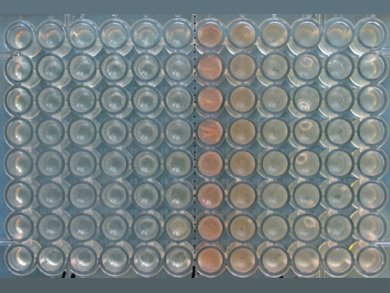Reindert Nijland and co-workers, Newcastle University, UK, have revealed bacteria have a sense of smell.
By growing Bacillus licheniformus in a microtitre plate adjacent to a bacterial culture of the same or a different species, biofilm formation and pigment production were elicited by the volatile molecule ammonia.
To show that gaseous ammonia was responsible for the induction, each of the cultures were flanked by a column of wells containing an aqueous solution of ammonia at different concentrations. Absorbance was measured and the average growth curves were plotted. A 0.05 % ammonia solution in H2O (25 mM) showed a similar induction as observed previously with the inducing cultures.
This discovery, in addition to others, shows that bacteria are capable of at least four of the five senses; a responsiveness to light – sight – contact-dependent gene expression – touch – and a response to chemicals and toxins in their environment either through direct contact – taste – or through the air – smell.
- Bacterial Olfaction
R. Nijland, G. Burgess,
Biotechnol. J. 2010, 5.
DOI: 10.1002/biot.201000174




